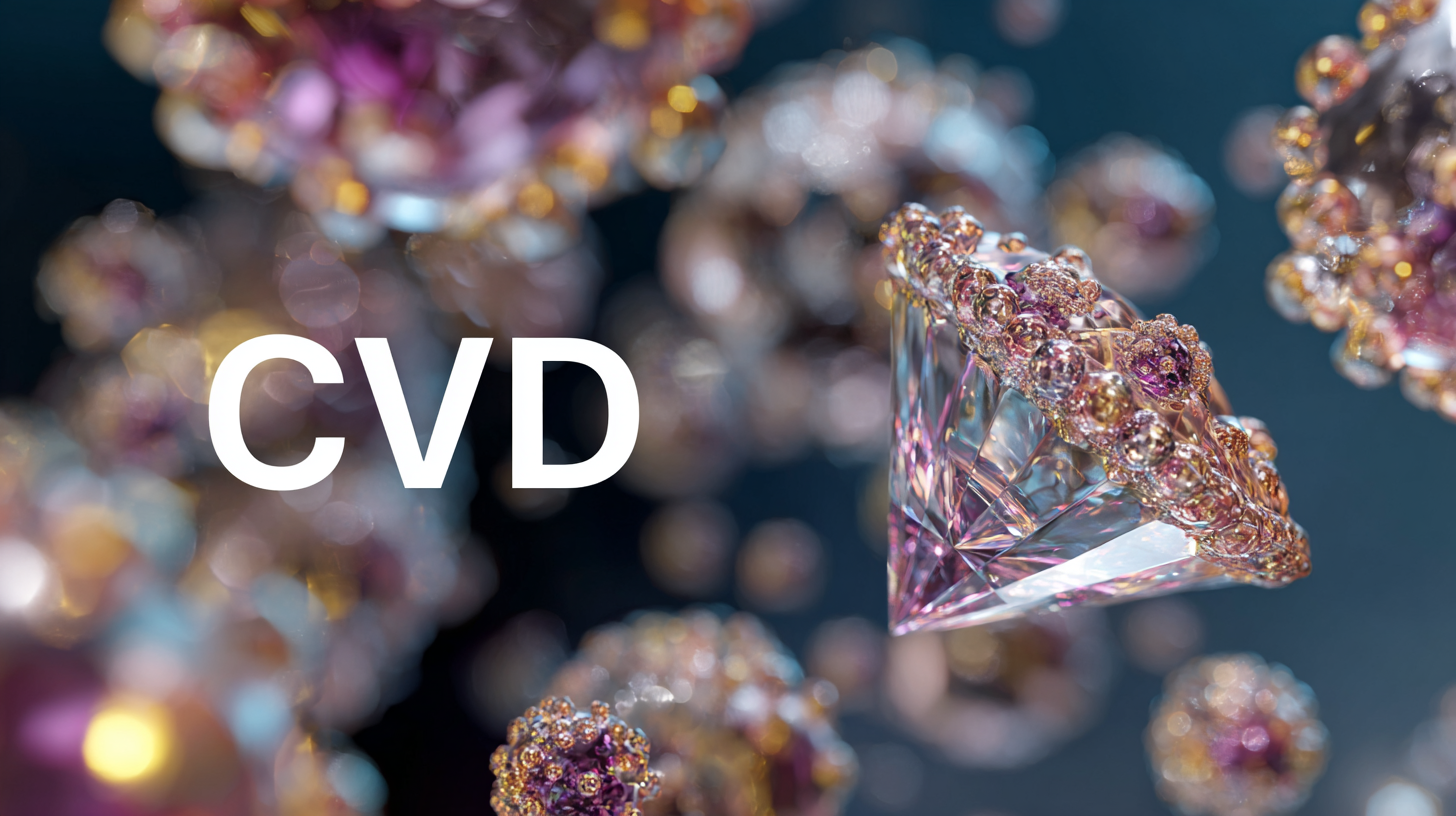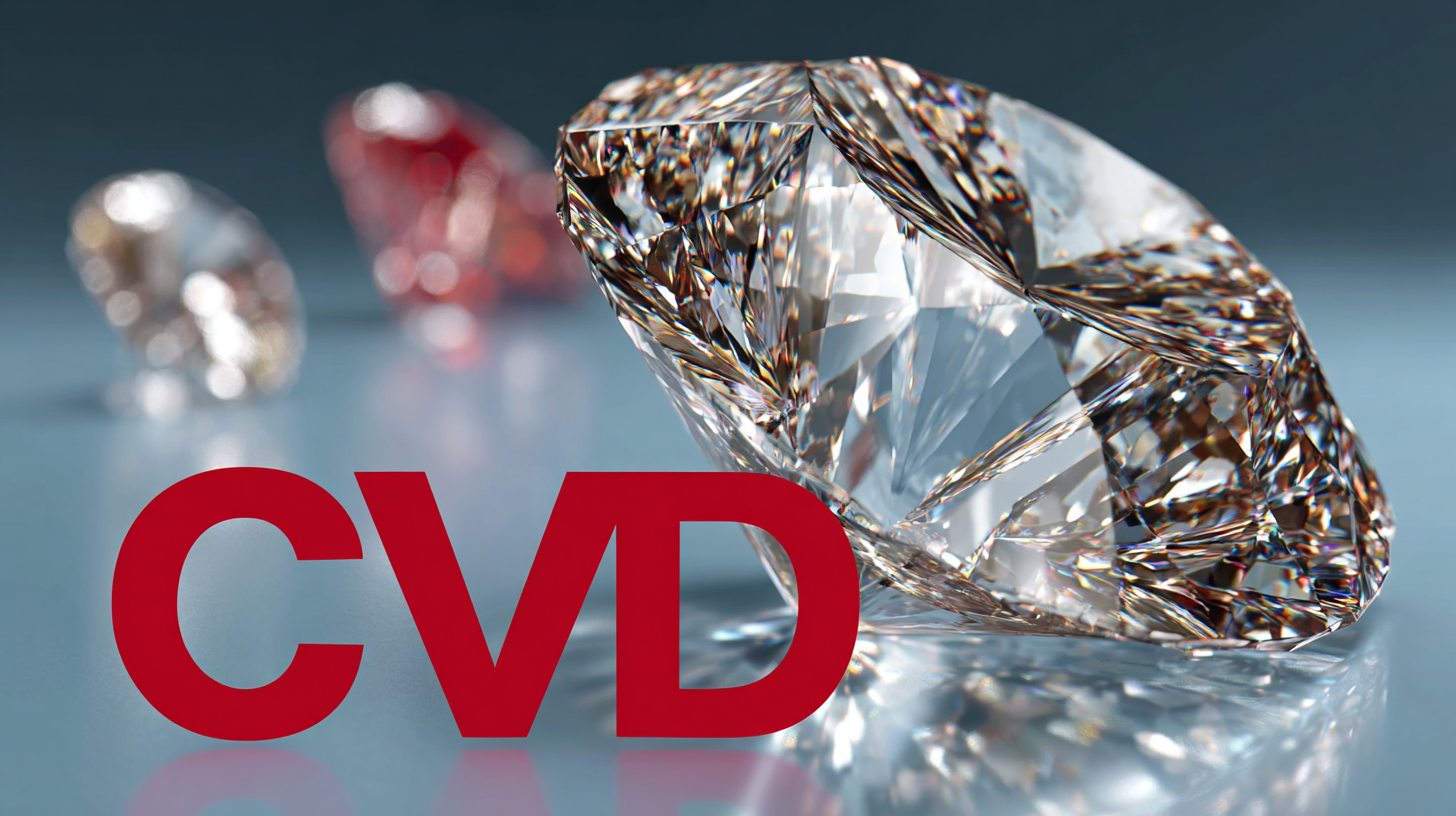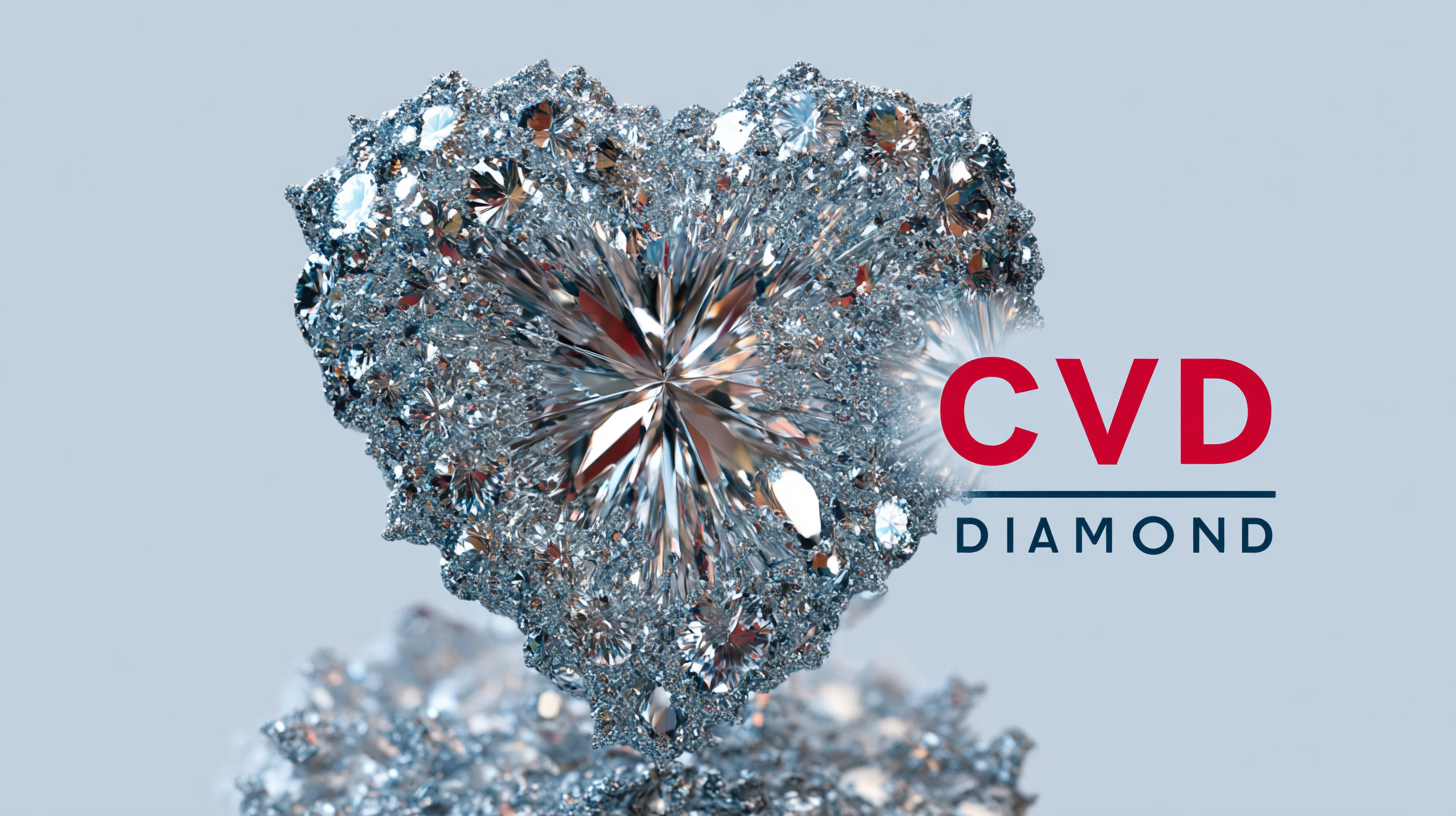
In recent years, the CVD diamond process has emerged as a cornerstone of advanced material science, driving innovations across various industries. According to a report by MarketsandMarkets, the global synthetic diamond market is expected to reach USD 27.2 billion by 2025, growing at a compound annual growth rate (CAGR) of 6.9%. This surge is largely attributable to the unique properties of CVD diamonds, which offer superior thermal conductivity, electrical insulation, and wear resistance compared to traditional materials. Key applications range from cutting tools and electronics to medical devices, underscoring the versatility of CVD diamonds. As the demand for high-performance materials continues to rise, understanding the strengths and applications of different CVD diamond processes becomes crucial for manufacturers and researchers alike. In this blog, we will delve into the features of the best CVD diamond processes, explore their applications, and provide guidance on selecting the right one for your specific needs.

 Chemical Vapor Deposition (CVD) diamond processes have revolutionized the production of synthetic diamonds, offering numerous advantages over traditional methods. Notably, CVD diamonds boast exceptional purity and superior mechanical properties, making them highly sought after in various industries. A recent report from MarketsandMarkets estimates that the CVD diamond market is projected to reach approximately $3.35 billion by 2026, indicating a significant growth potential driven by advancements in manufacturing technology and increasing applications in electronics and optics.
Chemical Vapor Deposition (CVD) diamond processes have revolutionized the production of synthetic diamonds, offering numerous advantages over traditional methods. Notably, CVD diamonds boast exceptional purity and superior mechanical properties, making them highly sought after in various industries. A recent report from MarketsandMarkets estimates that the CVD diamond market is projected to reach approximately $3.35 billion by 2026, indicating a significant growth potential driven by advancements in manufacturing technology and increasing applications in electronics and optics.
When choosing the right CVD diamond process, it is essential to understand key characteristics such as growth rate, uniformity, and film quality. For instance, processes like Hot Filament CVD and Microwave Plasma CVD have been shown to produce higher quality diamonds with fewer defects, while maintaining substantial growth rates of up to 10 microns per hour. This level of precision is crucial for applications that require high-performance materials, such as semiconductor components and cutting tools.
Tips: Always consider your specific application needs when selecting a CVD diamond process. If mechanical strength and thermal conductivity are critical, prioritize methods known for producing high-quality crystalline structures. Additionally, staying updated on industry developments can help you make informed decisions regarding the latest technologies and best practices in CVD diamond manufacturing.
When choosing a Chemical Vapor Deposition (CVD) method for diamond synthesis, it's crucial to understand the various available options and their respective advantages and disadvantages. Popular CVD techniques include Hot Filament CVD (HFCVD), Microwave Plasma CVD (MPCVD), and Plasma-Enhanced CVD (PECVD). HFCVD often boasts simpler setup and lower costs but may produce less uniform films compared to MPCVD, which excels in film quality and consistency at a higher price point.
Tips: When evaluating CVD methods, consider both your budget and the required diamond quality for your application. If you're working with intricate designs or high-purity applications, investing in MPCVD could be worthwhile. Conversely, for more conventional applications, HFCVD might be a cost-effective choice.
Additionally, PECVD stands out for its versatility and ability to operate at lower temperatures, making it suitable for coatings on sensitive substrates. However, this method may require more sophisticated equipment and expertise, impacting setup time and costs.
Tips: Always consult with experts and consider sample testing before committing to a specific CVD method. Understanding your project's requirements will help guide you to the right choice, maximizing the performance and efficiency of the diamond materials produced.

CVD diamonds, or Chemical Vapor Deposition diamonds, have been making significant strides across various industries due to their unique properties and versatility. Their applications span a wide range, including electronics, optics, cutting tools, and even medical equipment. The robust nature of CVD diamonds makes them ideal for use in high-performance environments, where traditional materials might fail. For instance, in the electronics industry, CVD diamonds play a crucial role in heat sinks and thermal spreaders, enhancing the performance and reliability of electronic devices.
As the global lab-grown diamond market continues to expand, projected to reach USD 59.2 billion by 2032, industries are increasingly adopting CVD diamonds for their cost-effectiveness and ethical appeal compared to traditional mined diamonds. Furthermore, CVD diamonds contribute significantly to advanced manufacturing processes in sectors such as aerospace and automotive, where precision and durability are required. Making the right choice when selecting a CVD diamond process is essential; factors such as crystal quality, growth rate, and suitability for specific applications should be considered to maximize the potential benefits of these remarkable synthetic gems.
When selecting the ideal Chemical Vapor Deposition (CVD) diamond process, it's crucial to understand the specific features that align with your application needs. Different processes offer varying qualities of diamonds, which can significantly impact their performance in various applications, from industrial uses to jewelry. Engaging with professionals in the field and conducting thorough research can guide you in identifying the right process based on factors such as growth rate, crystal quality, and cost-effectiveness.
Incorporating insights from the advances in manufacturing technologies, it’s vital to consider how innovations at the atomic and close-to-atomic scale can enhance CVD diamond production. As these techniques evolve, they provide new possibilities for tailoring the properties of diamonds, which can broaden their applicability in areas like electronics and medical devices. Therefore, when choosing a CVD process, evaluating the latest technological developments alongside your specific requirements can lead to smarter, more efficient decisions.
The field of Chemical Vapor Deposition (CVD) diamond technologies is rapidly evolving, especially in light of recent geopolitical shifts, such as the U.S. response to China's gallium export controls. This has sparked a renewed interest in developing synthetic diamonds for semiconductor applications. The Defense Advanced Research Projects Agency (DARPA) has contracted with manufacturers to explore the potential of synthetic diamond and aluminum nitride semiconductors, which are known for their superior thermal conductivity and electrical properties.
As the synthetic diamonds market is projected to grow by USD 9.8 billion from 2020 to 2024, industries are recognizing the advantages these materials can bring. For businesses looking to invest in CVD diamond processes, understanding the unique features of various technologies is essential.
Tips for Choosing the Right CVD Diamond Process:





